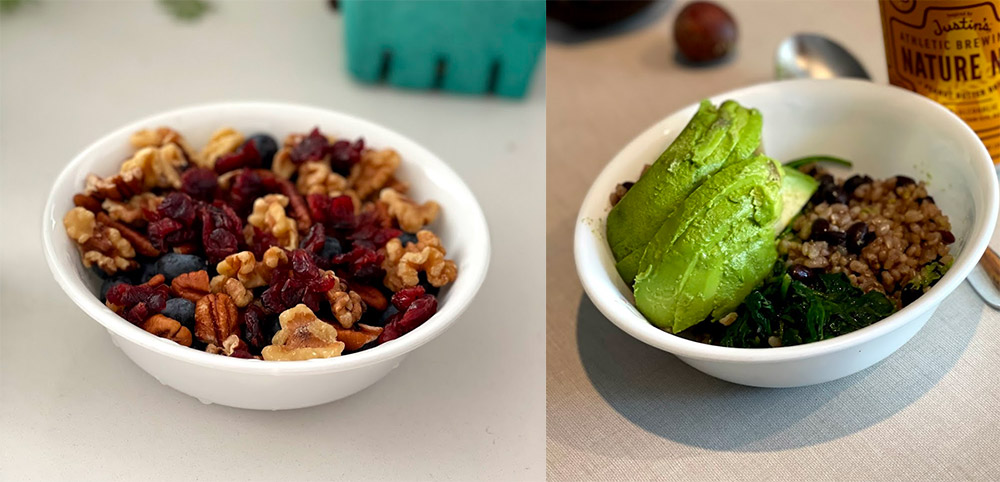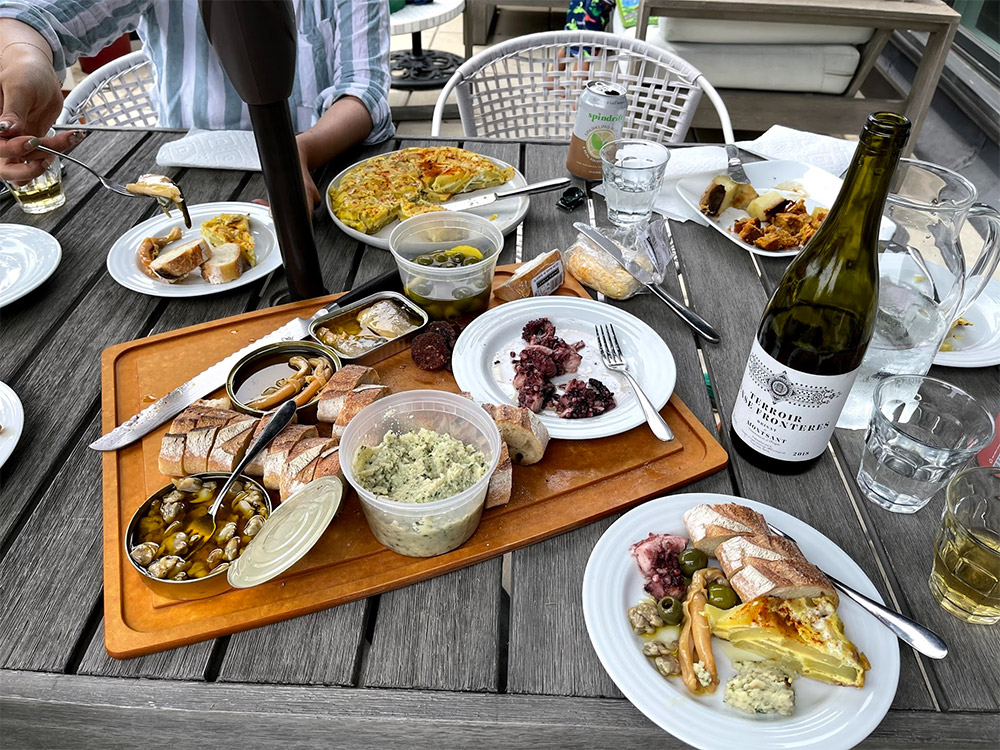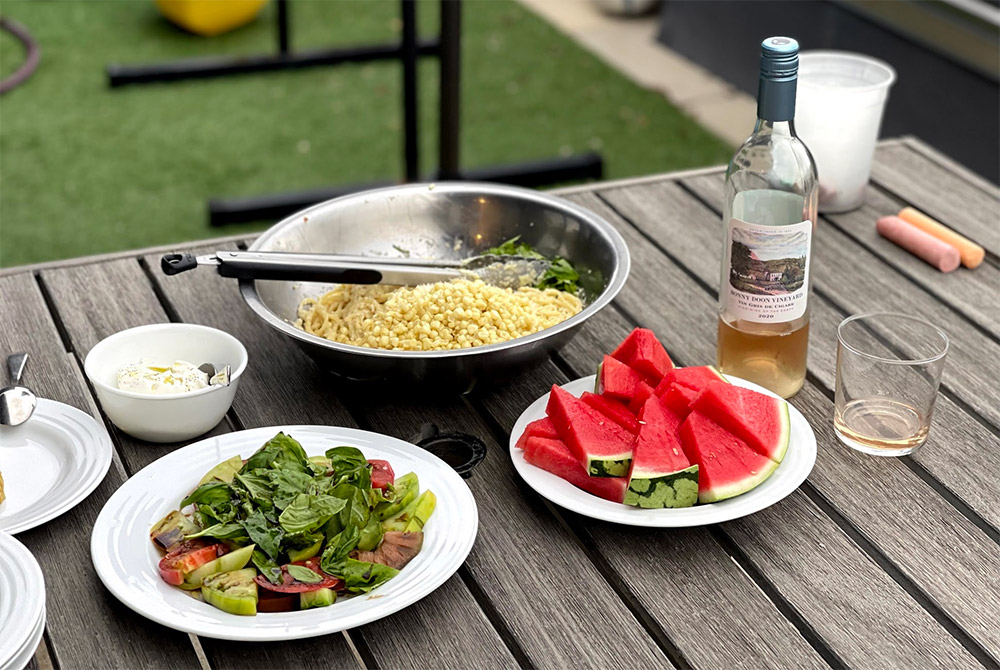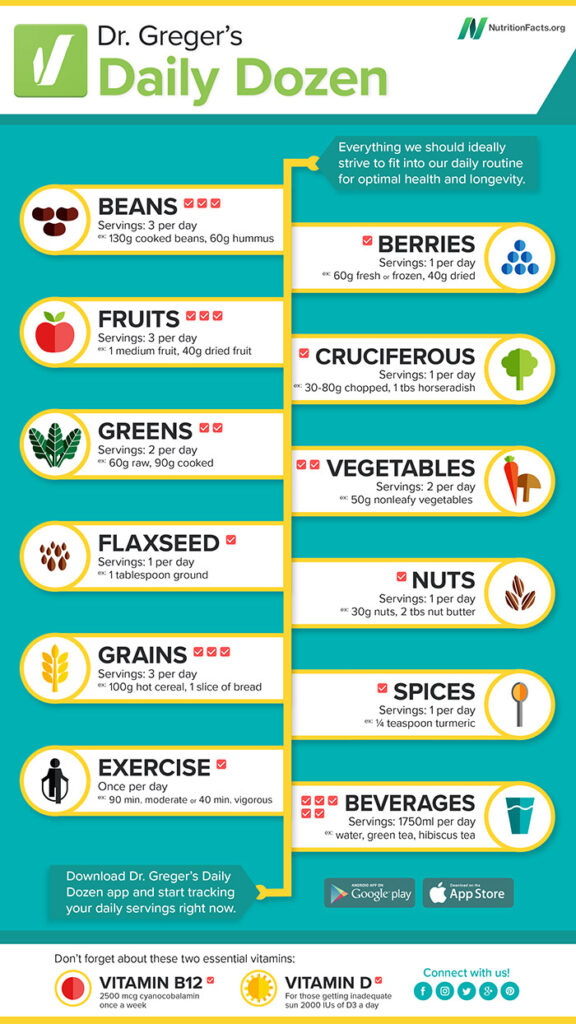Note: This is Volume 3 of my “Operating Rules” series. Check Volume 1 and Volume 2.
I’ve come to appreciate diet as an important lever for influencing my day-to-day wellbeing and also for giving me confidence about my long-term health. Eating is something we do multiple times a day and what goes into our body ultimately determines how our bodies function and feel.
A lot of my food knowledge comes from years of watching videos and reading the books of Dr. Michael Greger, founder of NutritionFacts.org and the author of the books How Not to Die and How Not to Diet. I’ve also experimented with different types of foods, stuck to a strict vegan diet for an entire year, and embraced intermittent fasting for several years. I’m also no stranger to dining out too frequently, craving sweets, and imbibing in too much alcohol. I don’t consider myself a health nut, but I’ve come to be more mindful about food and its impact on our health.
The Diet Operating Rules
The following are a set of Operating Rules that I’ve established to help guide my eating habits. I’ve been fortunate to maintain a body mass index (BMI) of around 23 to 24 for most of my adult life and over the past few years, I’ve been able to further slim down my waistline (around 29 inches). My goal is to maintain these while also going further to ensure that my body composition is sound, increasing muscle mass and decreasing visceral fat (I’ll need to get a more thorough body scan to benchmark this, which I’m planning to do).
My Diet Operating Rules are:
- Don’t eat too close to bedtime
- Consume as much fruits, veggies, and beans as possible
- Avoid processed and high sugar foods
- Minimize animal product consumption
- Surround myself with healthy food options
1. Don’t eat too close to bedtime
When you eat, I learned, is often as important as what you eat. I try to avoid eating after 7PM on most days so I can give my body plenty of time to digest before bedtime. Going to bed with a full stomach can cause acid reflux and a poor night’s sleep. I’ve seen my sleep quality metrics on my Whoop improve as I’ve stuck with this rule. It’s required lifestyle changes like having an earlier dinnertime and not going out for late night eats, but with two young children at home, these changes haven’t been too hard to make.
I also have liquid versions of this rule: no coffee (caffeine) after 2PM and no alcohol after 7PM. Following these have also helped my sleep quality quite a bit.
2. Consume as much fruits, veggies, and beans as possible
The main takeaway from Dr. Greger’s books How Not to Die and How Not to Diet is that we humans are best served by consuming the things our bodies have evolved to thrive on: whole plant foods. Eating fruits, vegetables, beans, nuts, seeds, and whole grains in raw, simply cooked, or minimally processed ways can do wonders for our body. Dr. Greger’s Daily Dozen chart (see below) is a great resource that’s helped me to think about what I consume. I haven’t been as fanatical about following the recommended daily servings, but I follow the general rule of trying to consume as much fruits, veggies, and beans as a percentage of my daily intake. As I’ll share below in “Go-To Meals”, I make it easy for myself to consume fruits, veggies, and beans on a daily basis. The way the body interacts with and absorbs these whole plant foods is a thing of beauty. To replace these with processed foods high in sugar, fat, and salt is a big reason why there’s an obesity epidemic in this country.
3. Avoid processed and high sugar foods
I used to take comfort in sweets like chocolate bars or chocolate cookies, often gorging myself on an entire box of cookies from Levain Bakery. I could also polish off a pint of Jeni’s Ice Cream in a couple of sittings, no problem. I’d also have a hankering for salty snacks and indulge in a bag of potato chips or cheese puffs. Because I exercised regularly and felt generally “healthy”, I let myself indulge in these snacks a few times a week. But over time, I began to more acutely feel the crappy after effects of indulging in these snacks. While they felt great going down, there was almost always a sort of regretful hangover that resulted from the sugar and sodium overload. I felt sluggish, my stomach sometimes felt uncomfortable, and a feeling of nausea set in. My body kept telling me I should stop.
There’s little nutritional value from these snacks and they’re an incredibly easy way to pack on hundreds of excess calories in no time due to the caloric density of sugar and saturated fats. I decided to stop buying these and began to address any cravings with different alternatives (see #5: Surround myself with healthy food options).
I’ll indulge in the occasional ice cream when I’m out with family and maybe a few cookies around holiday time, but best for me to avoid these “vice” foods on a daily basis and instead make them into rare treats.
Beyond the chips, cookies, and ice cream are other processed foods that are high in sugar, sodium, or saturated fats. I’ve cut down my cheese intake as well as so-called “better for you” snacks with labels like “keto-friendly”, “paleo”, and “vegan”. If they’re shelf-stable and come in designed packaging with added sugars, fats, and salt, I try to steer clear. Even favorite bar-shaped snacks with “minimal” and “natural” ingredients count as processed in my book. Same goes for nut butters that have the added sugars and palm oil. Breakfast pastries, too, have made their way to my “do not consume” list for the same reasons (I was a sucker for chocolate croissants). Keeping these out of my diet allows me to prioritize the whole plant foods mentioned above.
4. Minimize animal product consumption
I’ve found it challenging to abstain completely from meat and fish, especially when getting together with friends or extended family. The one year I stuck to a strict vegan diet was enlightening and taught me a lot about how it was actually fairly easy to be plant-based for 80-90% of the time. The social meals are where being strict can feel isolating and impolite. And there are also times when I enjoy a good sushi omakase.
The rule here is to minimize, which for me means some meat, fish, and dairy consumption is fine as long as they are a small part of my overall diet. Perhaps it’s anchovies used in a salad dressing or some chunks of pork in a mostly veggie-forward stew. And if I can make it through the week with 3 to 4 of the 7 dinners having been completely plant-based, then all the better.
The rule comes in handy when ordering takeout. I’ll opt for green curry with tofu vs. chicken or I’ll go for the bean and sweet potato burrito instead of pork. What I aim for is general preference towards plants. I’m not a huge fan of alternative meats and their nutritional content, so if I’m really craving a burger and haven’t had one in a long while, I’ll get a classic beef burger vs. an Impossible burger.
The downsides of consuming meat and fish are well documented but the food industry has been so thoroughly incentivized to prioritize meat and fish consumption. This is a topic that, much like vaccines, can get quite divisive with both sides cherry-picking “studies” to show why the other side is wrong. I’m firmly in the camp that meat and fish are best to be avoided but also okay with consuming them in minimal quantities for enjoyment.
5. Surround myself with healthy food options
Deliberate environmental design reinforces habits. I’ve seen this be the case for exercise (having equipment lying around the house has made me use them more), reading (having books handy helps me read more), and sleep (having black-out shades and sleep mask helps me fall asleep and stay asleep longer). The same goes for eating and it starts with the way we shop for the household. We go big on fresh produce, dried fruits, beans, and nuts, which allows me to have easy access to healthy options.
I’ve found nuts and dried fruit to be the most effective hacks when it comes to snacking. They’re dense in calories, so a small handful of walnuts and a couple of dried Medjool dates are enough to fill me up while giving me a boost in antioxidants and fiber. I also enjoy dipping raw cucumbers in hummus, a minimally processed way to consume beans (chickpeas).
Go-To Meals
A big part of staying true to these rules is having a set of go-to meals that I can reliably enjoy week in and week out. I’m not aiming for an ascetic lifestyle devoid of food-related pleasures. I enjoy a rich lumberjack breakfast with my family once a week (blueberry pancakes, eggs, bacon, and sausage), I love going out for wood-fired pizza, and I won’t say no to an elegant 11-course kaiseki meal. That said, I also enjoy these go-to meals both in taste and in the way they make me feel.

My blueberry bowl (left) is something I have at least 5 times a week. For dinner, I love rice and beans with spinach and avocados.
Blueberry Bowl
- Blueberries
- Walnuts
- Pecans
- Dried cranberries
This is my “superfood power meal” that I have every weekday around 3PM. It’s rich in antioxidants and fills me up. The dried cranberries are perhaps the only indulgence as they have added sugar, but I much prefer it to raisins in terms of taste. Blueberries are beneficial to the brain, so I think of it as a natural nootropic that helps my cognitive functions.
Rice and Beans
- Rice
- Black beans
- Sautéed spinach
- Avocado
- Hot sauce
This simple meal provides grains, beans, veggie, and fruit (yes, avocado is a fruit!) in a convenient format. I find it to be a very clean and energizing meal that’s easy to prepare. I usually dab it with some Cholula hot sauce for extra flavor or add a few slices of pickled jalapeño peppers.
Oatmeal
- Oatmeal
- Raisins
- Blueberries
- Walnuts
- Pecans
- Cinnamon
On weekends, when I partake in breakfast (I skip breakfast during weekdays), I love oatmeal as an option. It’s easy to make and delicious with the right fixings. I’ve been able to ease off of adding maple syrup or brown sugar and instead find the sweetness from the raisins to be enough. Oatmeal is a hearty whole grain that’s packed with nutrients and good at filling you up.
Japanese Sweet Potatoes
This is my favorite type of sweet potato that I grew up eating (Koreans call it goguma) and I much prefer it to the orange flesh sweet potato. It’s packed with vitamins, fiber, and antioxidants and an easy way to fill up. I usually bake a few of these at the start of the week in our toaster oven and then keep in the fridge. I’ll slice a few pieces, sprinkle some cinnamon, and enjoy as a snack on weekends or with my blueberry bowl on weekdays.
Keeping It Simple With Mindful Eating
Eating is deeply personal in that we all have our subjective takes on what tastes good, what makes us feel good, what energizes us, and what comforts us. My rules are a culmination of years of learning and experimenting to get to a point where I’ve felt pretty good about my routine. There are still choices I can make daily to improve the quality of my nutritional intake, but I’m optimistic about the overall framework. As long as I continue to be mindful and make tweaks as needed, I think I’ll be in good shape.
To help me visualize my diet, I created a schedule populated with a typical menu of what I eat in a given week. It’s useful to see my feeding windows and how keeping a stricter diet during the week lets me indulge a bit more on the weekends.

A typical week depicting the meals I eat each day.
I’m not going for perfect but instead, enough “good decisions” around my diet to significantly outweigh the bad in the long run.
And lastly, having a foundation for mindful eating means I can be deliberate about when to let go and indulge in some decadence. This could be going out or hosting a party with some tasty treats that I normally wouldn’t have. I try to keep these occurrences few and far in-between so they truly feel special and memorable when they happen.

A Spanish canned seafood feast with friends is one such occasion where I’ll indulge in a meal that falls outside my Operating Rules.

